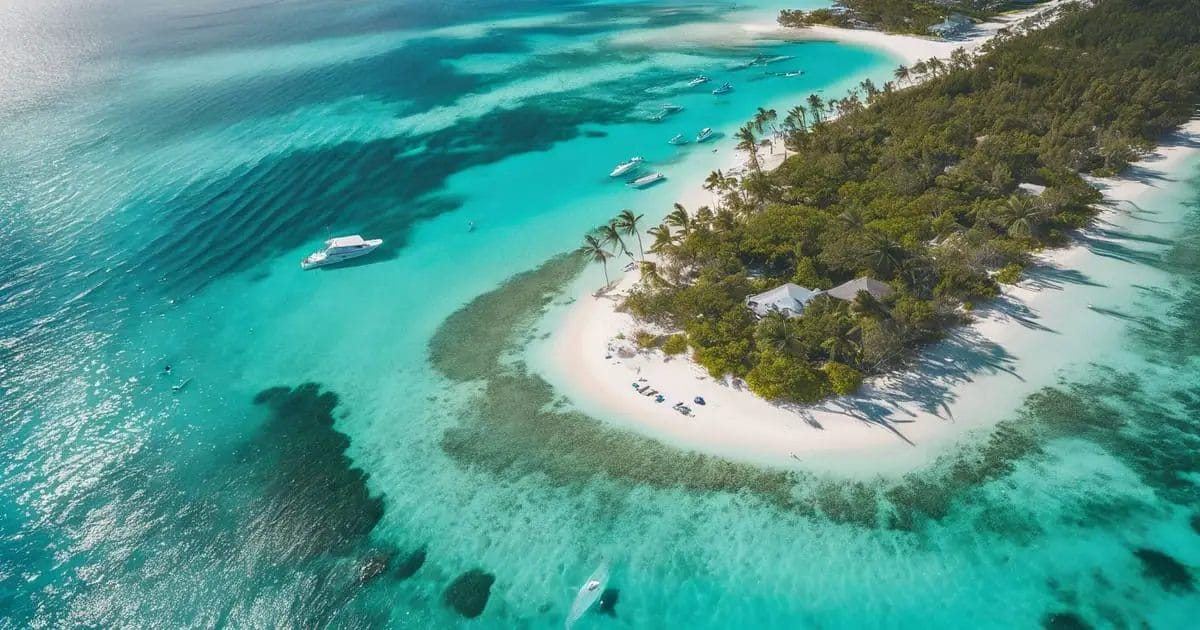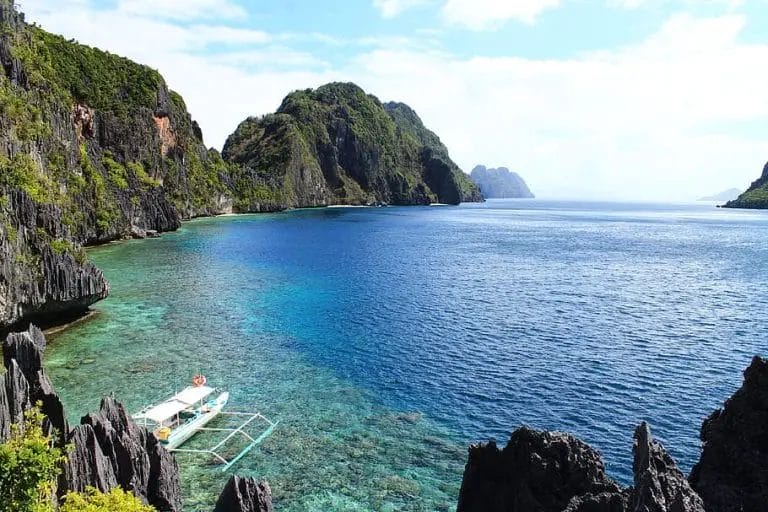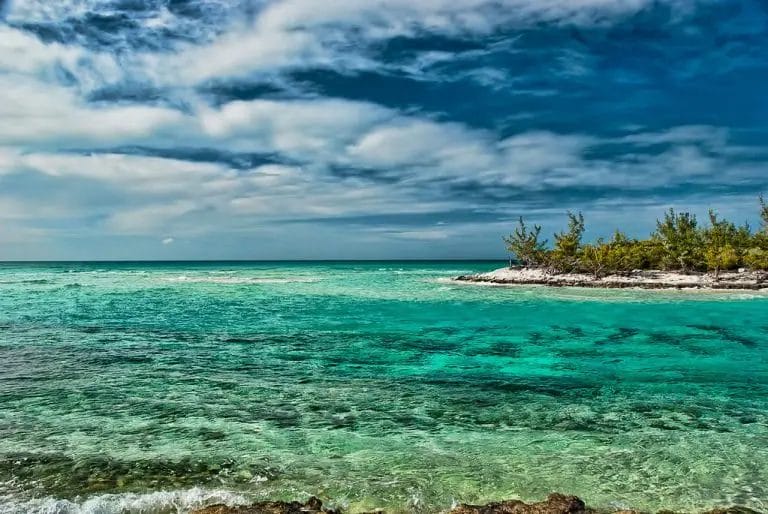Cayman Islands Water Temperature: The Ultimate Guide!
One crucial factor that often goes overlooked is the warm sea temperature. The humidity and rain are also influenced by the warm sea in the oceans. Whether you’re an avid swimmer, snorkeler, or simply enjoy basking in the sun by the shore, understanding surf forecasts, water temperature, humidity, and the oceans can greatly enhance your experience at Mile Beach.
The Cayman Islands, a place known for their clear waters and vibrant marine life, offer an ideal destination for those seeking warm waters and breathtaking underwater adventures. With average sea surface temperatures, this town is perfect for enjoying the stunning beaches.
Located in the Caribbean Sea, the Cayman Islands boast crystal-clear turquoise waters, a mile beach, and a charming town. The islands experience occasional rain and high humidity, attracting travelers from around the world.
But what is the average water temperature in this tropical paradise town in March, with its humidity and occasional rain? By analyzing historical data and gathering information from various sources, we can gain insight into the range of sea surface temperatures (SST) in open water throughout different months and locations on the islands. This data helps us understand the impact of rain, humidity, and the month of March on SST.
Grand Cayman water temperature by month
Average November Sea Temperatures
In the town of Cayman Islands, March brings rain and humidity. However, it also offers pleasant sea temperatures for those looking to take a dip in its crystal-clear waters. The average surface water temperature during this month hovers around 27°C degrees Celsius (81°F degrees Fahrenheit).
The humidity is influenced by the open water, and in March, it is typically moderate. This makes it an ideal time for swimming, snorkeling, and other water activities, especially with the clear skies, warm sea surface temperature, and low humidity. Additionally, the absence of rain makes it even more enjoyable.
Compared to other months in the region, November offers comfortable water temperatures that are neither too hot nor too cold, with clear skies and minimal humidity. The chance of rain during this month is low. While summer months may see higher sea temperatures, November provides a delightful balance between warmth and coolness.
Additionally, the surface water is clear and the humidity is low, making it an ideal time to enjoy the refreshing rain. It’s like Goldilocks finding the perfect porridge—not too hot, not too cold, and just the right humidity! The rain has cleared, leaving the surface water just right.
Several factors influence sea temperatures during November. One of the main contributors to the surrounding air temperature is humidity, rain, and clear conditions. As the rain comes and the humidity decreases slightly after the scorching summer months, so does the water temperature. It becomes clear that the weather is cooling down. Ocean currents play a role in regulating sea temperatures throughout the year, regardless of rain, humidity, or clear conditions.
Temperature Variations
Water temperature in the Cayman Islands experiences variations across different seasons, regardless of rain, humidity, or clear weather. During winter (December to February), sea temperatures tend to be cooler compared to other times of the year.
However, this season also brings occasional rain and higher humidity levels. On clear days, though, the sea remains cool and refreshing. On the flip side, summer (June to August) sees warmer waters that are more inviting for beachgoers, even during rain or high humidity. However, there are also clear days that provide perfect conditions for a day at the beach.
But it’s not just seasonal changes that affect water temperature; daily fluctuations due to rain and humidity occur as well, making it clear that various factors influence water temperature. Factors such as sunlight exposure, cloud cover, wind patterns, sea water temperature, humidity, rain, and clear conditions can impact how warm or cool the ocean feels on any given day.
So even within a single season like November, you might experience slight variations in water temperature due to rain and humidity from one day to another. However, the overall weather is usually clear.
Weather patterns, including humidity and clear conditions, also have a significant influence on variations in water temperature. For example, if there’s a prolonged period of rain or storms with increased humidity, it can lead to cooler ocean temperatures due to increased cloud cover and reduced sunlight reaching the clear surface of the water.
Chart Monthly Average Water Temperature in Grand Cayman
To get a clearer picture of how water temperatures and humidity vary throughout the year, let’s take a look at a chart that displays the monthly average water temperatures in Grand Cayman.
Comparing historical data with current trends can provide valuable insights into any long-term changes in water temperature, humidity, and clear conditions. It allows researchers to monitor shifts in oceanic conditions, including humidity, and better understand how they might impact marine life and ecosystems.
Water temperature on the beaches of Cayman Islands

Variations in Water Temperature across Different Beaches
The water temperature and humidity in the Cayman Islands can vary across different beaches, offering a range of experiences for visitors. Some beaches are known for their warm waters and high humidity, while others provide cooler temperatures with lower humidity levels.
One popular beach with warm water and high humidity is Seven Mile Beach on Grand Cayman Island. The humidity here is usually balmy and inviting, making it an ideal spot for swimming and snorkeling in the water. Visitors can enjoy the pleasant sensation of the warm Caribbean Sea as they lounge on the sandy shores, feeling the humidity in the air, or explore the vibrant underwater world.
On the other hand, if you prefer cooler waters with low humidity, Rum Point Beach is a great choice. Located on the northern side of Grand Cayman Island, this beach offers a refreshing escape from the heat and high humidity. The humidity tends to be slightly higher here due to its position along the coast and its exposure to ocean currents. The water temperature also tends to be slightly cooler.
Factors Influencing Local Variations in Beach Water Temperatures
Several factors contribute to variations in beach water temperatures within the Cayman Islands:
- Location: The specific location of a beach plays a significant role in determining its water temperature. Beaches located on different sides of an island may experience varying degrees of warmth or coolness due to differences in ocean currents and exposure to wind patterns.
- Depth: The depth of the water near a beach can affect its temperature. Shallow areas tend to warm up more quickly than deeper sections, resulting in higher water temperatures near shorelines.
- Seasonal Changes: Seasonal variations also impact beach water temperatures. During summer months, when air temperatures rise, coastal waters tend to become warmer as well. Conversely, during winter months, colder air temperatures can lead to slightly cooler waters.
- Underwater Topography: The underwater topography surrounding a beach can influence its water temperature too. Areas with coral reefs or rocky formations may create pockets of cooler water due to shade and increased water movement.
- Ocean Currents: Ocean currents play a crucial role in determining water temperatures around the Cayman Islands. Warm currents, such as the Caribbean Current, can bring warmer waters to certain beaches, while cooler currents, like the Loop Current, can result in lower temperatures.
It’s essential to consider these factors when planning your beach activities in the Cayman Islands. Whether you’re seeking warm waters for swimming or cooler temperatures for a refreshing dip, understanding the local variations in water temperature can help you choose the perfect beach for your preferences.
Current weather
The Cayman Islands, known for their stunning beaches and crystal-clear waters, also boast a delightful tropical climate. Let’s take a look at the current weather conditions in this paradise destination and see how they might be impacting the water temperature.
Overview of Current Weather Conditions
Currently, the Cayman Islands are experiencing warm and pleasant weather. The islands are renowned for their year-round sunshine, so you can expect plenty of sunny days to soak up the rays.
Notable Weather Events or Patterns
While the Cayman Islands typically enjoy calm and consistent weather, it’s worth noting any notable weather events or patterns that may be affecting the local climate at present. Keep an eye out for any changes in wind patterns or heavy rain showers that could impact your beach plans.
Connection between Current Weather and Water Temperature
The current weather conditions play a significant role in determining the water temperature on the beaches of the Cayman Islands. As air temperatures rise, so does the water temperature. This means that during periods of warm weather like now, you can expect pleasantly warm waters perfect for swimming and other water activities.
However, it’s important to remember that water temperatures can vary depending on factors such as currents and location within the islands. While some areas may have slightly cooler waters due to oceanographic influences, others might offer even warmer temperatures due to shallow depths or proximity to reefs.
To get a more accurate understanding of specific water temperatures at various beaches across the Cayman Islands, it’s advisable to consult local resources such as surf forecasts or websites that provide real-time updates on ocean conditions. These sources often include information about sea surface temperatures and can help guide your choice of beach based on desired water temperature preferences.
In addition to considering current weather conditions when planning your beach day in the Cayman Islands, it’s also helpful to look at historical data. This can give you an idea of typical water temperatures during different seasons and help you make an informed decision about when to visit for optimal swimming conditions.
So, whether you’re seeking refreshing waters or balmy swims, keeping an eye on the current weather conditions will provide valuable insight into the water temperature awaiting you in the beautiful Cayman Islands.
Current sea temperature in Grand Cayman

Reporting Real-Time Measurements
One of the key factors to consider is the water temperature. After all, who wants to swim in freezing cold water or scorching hot waves? If you’re planning a trip to the beautiful Grand Cayman Island, you might be wondering what the current sea temperature is like. Well, fret no more because I’ve got you covered!
The current sea temperature in Grand Cayman varies throughout the year but generally hovers between 79°F (26°C) and 86°F (30°C). These temperatures are perfect for taking a refreshing dip in the crystal-clear waters and indulging in exciting water activities like snorkeling, diving, or even just lounging on the beach.
Comparing Current Readings
To put things into perspective, let’s compare these current sea temperatures with historical averages for this time of year.
Typically, during the summer months of June through August, the water temperature in Grand Cayman ranges from 82°F (28°C) to 84°F (29°C). So if you’re planning a visit during these months, you can expect warm and inviting waters that will make your swim all the more enjoyable.
During winter months such as December through February, the sea temperature drops slightly to an average range of 77°F (25°C) to 80°F (27°C). While still pleasant for swimming and other water activities, it may be slightly cooler compared to summer months. However, don’t let that discourage you! The weather remains sunny and tropical year-round on this stunning island.
Any Significant Deviations
While we’ve discussed typical sea temperatures around Grand Cayman Island, it’s important to note that there can be variations and deviations from these averages. Factors such as weather patterns, ocean currents, and climate change can influence sea temperatures.
In recent years, there have been reports of warmer sea temperatures globally due to climate change. This phenomenon can have various implications for marine life, including coral bleaching and the migration of certain species. However, it’s worth mentioning that Grand Cayman Island has taken significant steps to protect its marine ecosystems and ensure sustainable tourism practices.
So whether you’re planning a visit during the summer or winter months, rest assured that the sea temperature in Grand Cayman will provide a delightful experience for all beach enthusiasts. Just remember to pack your swimsuit, sunscreen, and adventurous spirit!
Where Is the warmest sea water in the world?
If you think the Cayman Islands have the warmest sea water in the world, think again! While the Cayman Islands boast beautiful beaches and crystal-clear waters, there are other locations around the globe where you’ll find even warmer seawater. Let’s explore some of these exceptional places and discover what makes their waters so warm.
Locations with exceptionally warm seawater
- The Red Sea: Located between Africa and Asia, the Red Sea is known for its high water temperatures. Thanks to its shallow depth and limited exchange with cooler oceanic waters, it experiences consistently warm temperatures year-round.
- The Persian Gulf: Situated in the Middle East, the Persian Gulf benefits from its shallow basin and proximity to hot desert climates. These factors contribute to its incredibly warm surface waters, making it a popular destination for beachgoers seeking warmth.
- The Arabian Sea: Adjacent to India and Pakistan, the Arabian Sea experiences high temperatures due to its location near tropical regions and monsoon systems. Its surface waters can reach impressive temperatures, especially during summer months.
- The Gulf of Mexico: Stretching along the southeastern coast of North America, this body of water is known for its warm temperatures throughout much of the year. It receives heat from both surrounding land masses and ocean currents, resulting in pleasantly warm seas.
Factors contributing to warm water conditions
Several factors contribute to these regions having exceptionally warm seawater:
- Latitude: Locations closer to or within tropical regions tend to experience warmer waters due to their proximity to direct sunlight.
- Shallow Depth: Bodies of water that are relatively shallow can heat up more quickly than deeper oceans because they have less volume through which heat can dissipate.
- Climate: Areas with hot desert climates or tropical climates often experience higher air temperatures that transfer heat into nearby bodies of water.
- Ocean Currents: Warm ocean currents, such as the Gulf Stream, can transport heat from one region to another, affecting water temperatures.
Comparing The Warmest Seawater Locations
While the waters of the Cayman Islands are undoubtedly warm and inviting, they don’t quite reach the same levels as some of these other destinations.
The average sea water temperature in the Cayman Islands ranges from around 79°F (26°C) in winter to 86°F (30°C) in summer. In contrast, places like the Red Sea and Persian Gulf often have average temperatures exceeding 86°F (30°C) throughout much of the year.
So, if you’re looking for truly scorching hot waters, you might want to consider venturing beyond the Cayman Islands and exploring these other regions where warm seas await you.
Grand Cayman photo gallery
Each photo will be accompanied by captions or brief descriptions to enhance viewer engagement and offer a glimpse into the allure of Grand Cayman through captivating imagery.
Beach Bliss
Take a moment to immerse yourself in the stunning beaches of Grand Cayman. Picture yourself lounging on the soft white sands, feeling the warm sun on your skin, and listening to the gentle lapping of waves against the shore.
The vibrant blues and greens of the water create a mesmerizing contrast against the pristine sand, making it an ideal spot for relaxation and rejuvenation.
Crystal-Clear Waters
The crystal-clear waters surrounding Grand Cayman are truly a sight to behold. Dive into these turquoise depths and discover a world teeming with colorful marine life.
Snorkelers can explore vibrant coral reefs, swim alongside graceful sea turtles, and encounter an array of tropical fish species. The clarity of the water allows for excellent visibility, providing an immersive experience like no other.
Underwater Wonders
Grand Cayman is renowned for its exceptional diving opportunities, and our photo gallery wouldn’t be complete without showcasing some underwater wonders.
Imagine descending into the depths where you’ll find intricate coral formations stretching as far as the eye can see. Swim through underwater tunnels, explore shipwrecks that have become home to diverse marine ecosystems, and witness breathtaking encounters with majestic stingrays.
Sunset Spectacles
As day turns into night, prepare to be captivated by breathtaking sunsets over Grand Cayman’s horizon. Our photo gallery includes stunning images that capture nature’s masterpiece as hues of pink, orange, and gold paint the sky in a dazzling display.
Whether you’re strolling along Seven Mile Beach or enjoying dinner at one of the island’s waterfront restaurants, the vibrant colors of the sunset will leave you in awe.
Natural Treasures
Grand Cayman is not just about its beaches and waters; it’s also home to a variety of natural treasures. Our photo gallery showcases lush mangrove forests, where you can kayak through winding waterways and observe unique ecosystems.
Explore the famous Mastic Trail, a pristine hiking trail that takes you through dense forests and offers glimpses of native flora and fauna.
Conclusion
So there you have it, a comprehensive guide to the water temperature in the Cayman Islands! From our exploration of Grand Cayman’s water temperature by month to discovering the warmest sea water in the world, we’ve covered all the essential information you need for your next beach getaway.
Now that you know when and where to find the perfect water temperature, it’s time to pack your swimsuit, grab your snorkeling gear, and dive into the crystal-clear waters of this tropical paradise. Whether you’re a seasoned diver or simply looking to relax on the sandy beaches, the Cayman Islands offer an unforgettable experience for everyone.
Don’t miss out on this opportunity to immerse yourself in nature’s own aquatic wonderland. Plan your trip today and get ready for an adventure like no other. The warm turquoise waters await you, inviting you to explore their vibrant marine life and create memories that will last a lifetime.
Remember, as with any travel plans, it’s always a good idea to check local weather forecasts and sea conditions before diving in. So go ahead, book your tickets, and prepare yourself for an extraordinary journey through the breathtaking underwater world of the Cayman Islands. Your tropical escape is just a few clicks away!
FAQs
What is the water temperature in the Cayman Islands?
The water temperature in the Cayman Islands typically ranges from 77°F (25°C) to 85°F (29°C) throughout the year. The warm Caribbean waters make it perfect for swimming, snorkeling, and diving.
Is the water temperature suitable for swimming?
Absolutely! The water temperature in the Cayman Islands is ideal for swimming all year round. Whether you’re a beginner or an experienced swimmer, you’ll enjoy taking a dip in these inviting tropical waters.
Can I go snorkeling in the Cayman Islands?
Definitely! With its crystal-clear waters and abundant marine life, snorkeling in the Cayman Islands is a must-do activity. Explore vibrant coral reefs, encounter colorful fish species, and even spot sea turtles while enjoying the pleasant water temperature.
Are there any specific months with warmer water temperatures?
While the water temperature remains relatively consistent throughout the year, some visitors prefer visiting during summer months like June, July, and August when temperatures can reach their peak. However, no matter when you visit, you’ll find enjoyable water conditions.
What activities can I do in addition to swimming?
Apart from swimming and snorkeling, there are plenty of other exciting activities to try in the Cayman Islands. You can go scuba diving to explore underwater caves and shipwrecks, embark on boat tours to discover hidden coves and sandbars, or simply relax on stunning beaches with breathtaking views.







